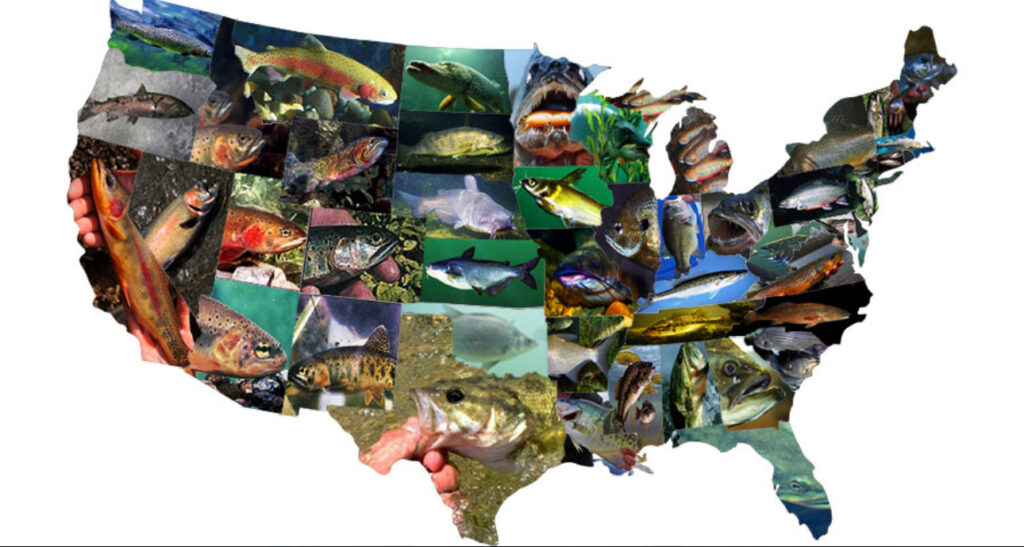
By Michael Gitter
Across the United States, each state has a designated fish that reflects its unique identity, natural beauty, and connection to aquatic life. From the vibrant Golden Trout of California to the mighty Striped Bass of Maryland, these fish symbolize not only the biodiversity of their habitats but also the cultural and economic significance they hold for their communities. Whether they are prized catches for anglers, indicators of healthy ecosystems, or steeped in local lore, these 50-state fish tell a story of resilience, conservation, and the enduring relationship between people and nature.
1. Alabama: Largemouth Bass
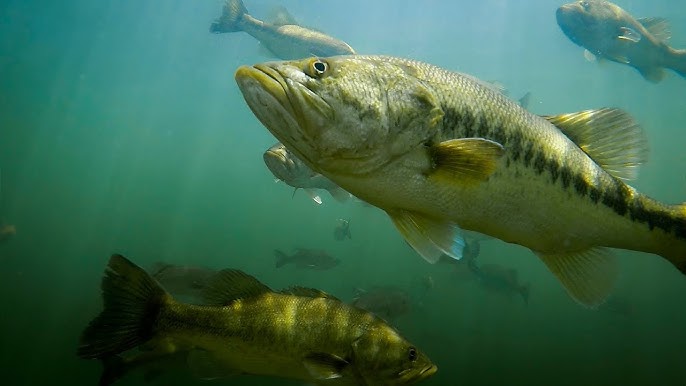
The Largemouth Bass, designated as Alabama’s state freshwater fish in 1975, is a cornerstone of the state’s angling culture. Renowned for its aggressive behavior and impressive size, this species thrives in Alabama’s abundant lakes, rivers, and reservoirs. Its popularity among sport fishermen has bolstered local economies and fostered a deep appreciation for aquatic conservation. The Largemouth Bass embodies Alabama’s rich natural heritage and the enduring allure of its freshwater ecosystems.
2. Alaska: King Salmon

Alaska’s state fish, the King Salmon, also known as Chinook Salmon, was designated in 1962. Celebrated for its formidable size and strength, the King Salmon is integral to Alaska’s fishing industry and Indigenous cultures. These salmon undertake extensive migrations from the ocean to freshwater streams to spawn, exemplifying remarkable resilience. Their rich flavor makes them a prized catch for both commercial and sport fishing, symbolizing Alaska’s wild spirit and deep connection to its waterways.
3. Arizona: Apache Trout
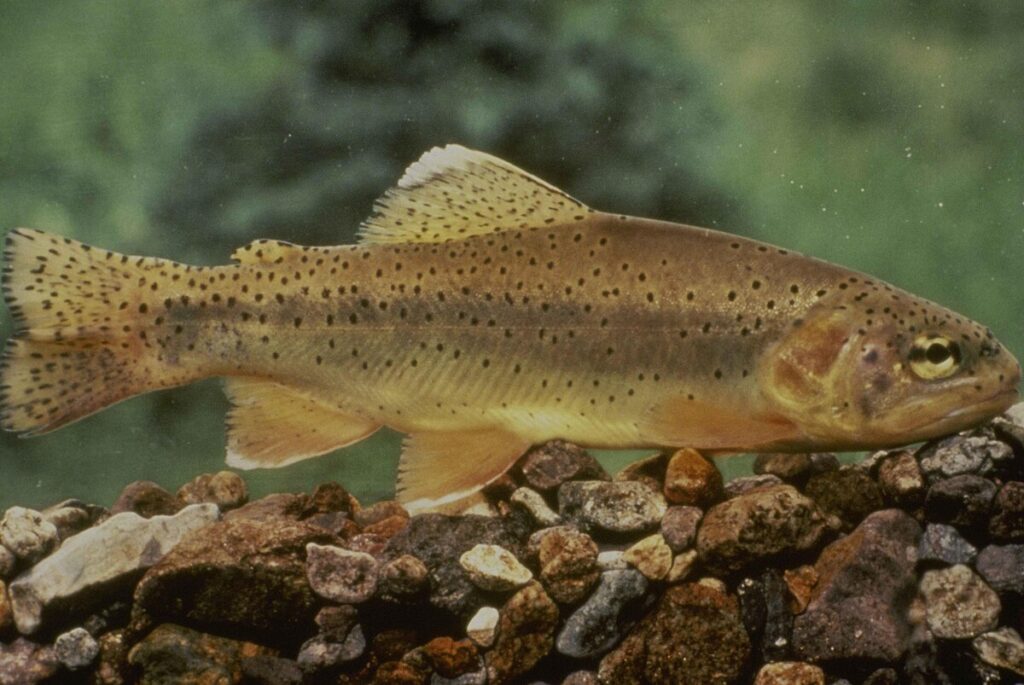
The Apache Trout, designated as Arizona’s state fish in 1986, is a rare species endemic to the state’s streams. Recognizable by its golden hue and distinctive black spots, the Apache Trout faced near extinction due to habitat loss and competition from non-native species. Conservation efforts have successfully revived its population, making it a symbol of Arizona’s commitment to preserving its unique natural heritage. The Apache Trout thrives in the cold, clear waters of Arizona’s White Mountains, reflecting the state’s diverse ecosystems.
4. Arkansas: Alligator Gar
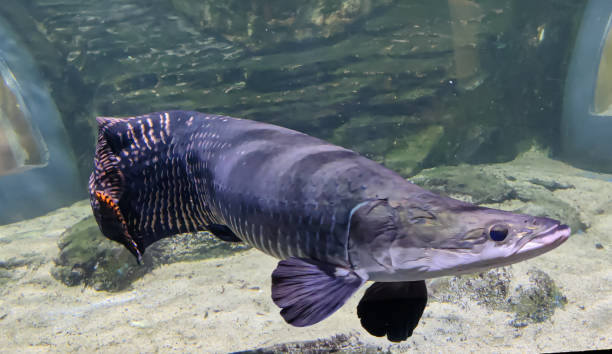
In 2000, Arkansas designated the Alligator Gar as its state fish, highlighting its unique presence in the state’s rivers and lakes. Known for its elongated body and toothy snout, the Alligator Gar is one of the largest freshwater fishes in North America, capable of reaching lengths over 10 feet. Despite its intimidating appearance, it plays a crucial role in maintaining ecological balance by preying on overpopulated species. The Alligator Gar represents Arkansas’s rich aquatic biodiversity and the importance of conserving native species.
5. California: Golden Trout
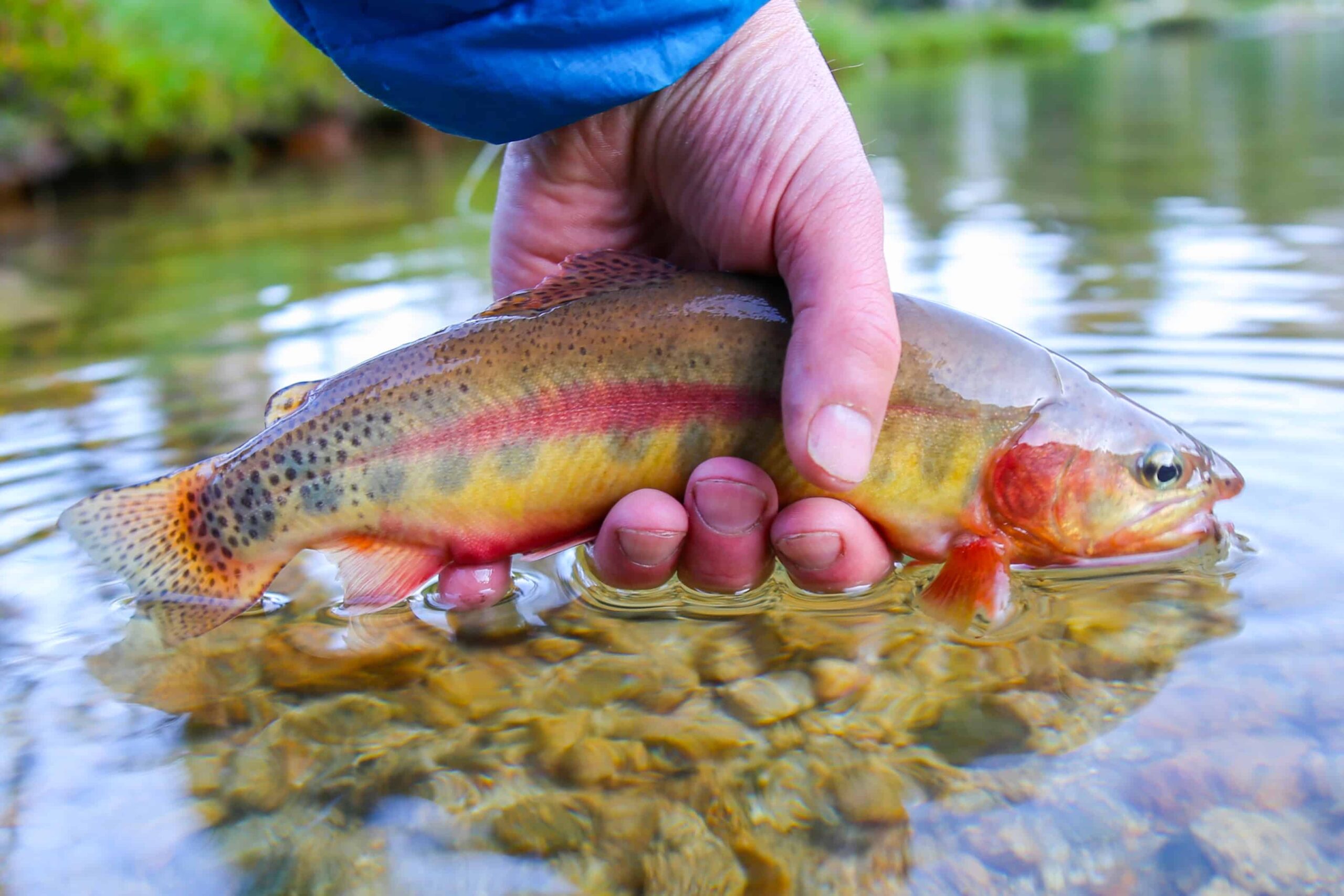
The California Golden Trout, designated as the state fish in 1947, is renowned for its vibrant coloration and is native to the high-altitude streams of the Sierra Nevada. Its bright golden body, adorned with red horizontal bands and black spots, makes it a visual marvel. Thriving in cold, clear waters, the Golden Trout has become a symbol of California’s natural beauty. Conservation efforts focus on protecting its habitat from threats like habitat degradation and hybridization, ensuring this emblematic species continues to flourish.
6. Colorado: Greenback Cutthroat Trout
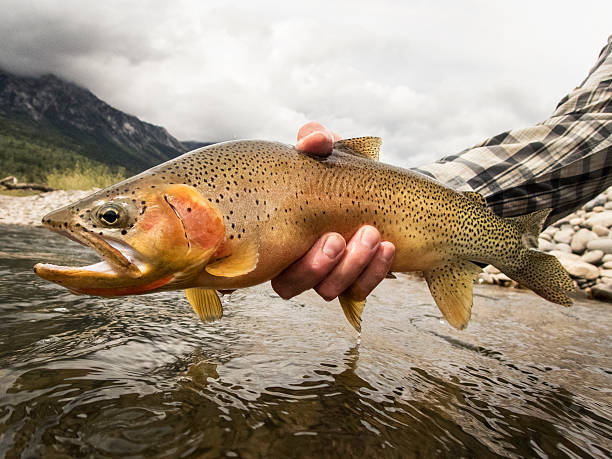
The Greenback Cutthroat Trout, designated as Colorado’s state fish in 1994, is a native species distinguished by its greenish hue and the characteristic red slash marks on either side of its lower jaw. Once thought extinct due to habitat loss and competition from non-native species, concerted conservation efforts have led to its reintroduction in several mountain streams. The Greenback Cutthroat Trout stands as a testament to Colorado’s dedication to preserving its natural heritage and the resilience of its native species.
7. Connecticut: American Shad

In 2003, Connecticut designated the American Shad as its state fish, recognizing its historical and economic significance. Known as the “founding fish,” the American Shad was a vital food source for Native Americans and early settlers. Each spring, these migratory fish journey from the Atlantic Ocean into the Connecticut River to spawn, a natural event celebrated by local festivals. Their silvery bodies and flavorful meat have made them a staple in regional cuisine, embodying Connecticut’s rich maritime traditions.
8. Delaware: Weakfish
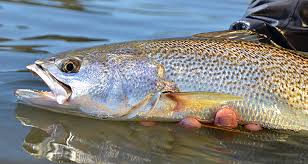
On The Water
The Weakfish, designated as Delaware’s state fish in 1981, is a species native to the Atlantic coast. Its name derives from the fish’s tender mouth tissue, which can tear easily during angling. Recognizable by its sleek, silver body with iridescent hues, the Weakfish is a popular target for sport fishing due to its fighting spirit and delectable taste. It holds economic importance for Delaware’s fishing communities and symbolizes the state’s rich coastal ecosystems.
9. Florida: Largemouth Bass
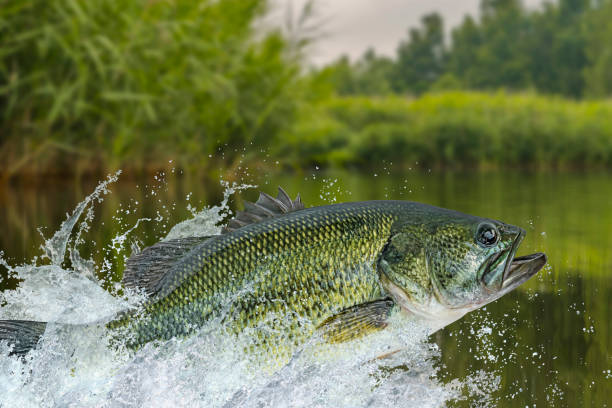
Florida designated the Florida Largemouth Bass as its state freshwater fish in 1975, underscoring its prominence in the state’s angling culture. Renowned for their size and strength, Florida Largemouth Bass inhabit the state’s extensive network of lakes, rivers, and wetlands. The species is a cornerstone of Florida’s freshwater fishing industry, attracting anglers worldwide and contributing significantly to local economies. The Largemouth Bass epitomizes Florida’s rich aquatic biodiversity and commitment to conservation.
10. Georgia: Largemouth Bass

In 1970, Georgia adopted the Largemouth Bass as its state fish, reflecting its popularity among anglers and its abundance in the state’s waterways. Known for their aggressive behavior and impressive size, Largemouth Bass thrive in Georgia’s warm lakes, rivers, and reservoirs. The species supports a vibrant recreational fishing industry, contributing to conservation efforts and outdoor recreation. The Largemouth Bass symbolizes Georgia’s dedication to preserving its natural resources and promoting sustainable fishing practices.
11. Hawaii: Humuhumunukunukuāpuaʻa
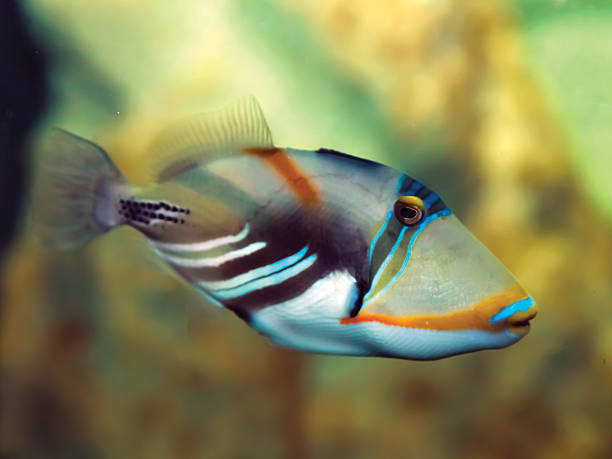
The Humuhumunukunukuāpuaʻa, commonly known as the reef triggerfish, was designated Hawaii’s state fish in 1985. Its Hawaiian name translates to “triggerfish with a snout like a pig,” reflecting its unique appearance and grunting sounds when caught. Found in Hawaii’s coral reefs, this colorful species is celebrated for its striking pattern of blues, yellows, and blacks. The Humuhumunukunukuāpuaʻa symbolizes Hawaii’s vibrant marine biodiversity and its cultural connection to the ocean. It remains a beloved icon of the Aloha State’s underwater ecosystems.
12. Idaho: Cutthroat Trout

Idaho named the Cutthroat Trout its state fish in 1990. Recognizable by the red slash marks beneath its jaw, this trout thrives in the state’s pristine rivers, streams, and lakes. Cutthroat Trout are native to Idaho and play an important role in the state’s fishing culture. Their preference for clear, cold water reflects the high quality of Idaho’s aquatic ecosystems. Anglers prize this species for its beauty and challenging catch, making it a symbol of Idaho’s wild and scenic waterways.
13. Illinois: Bluegill
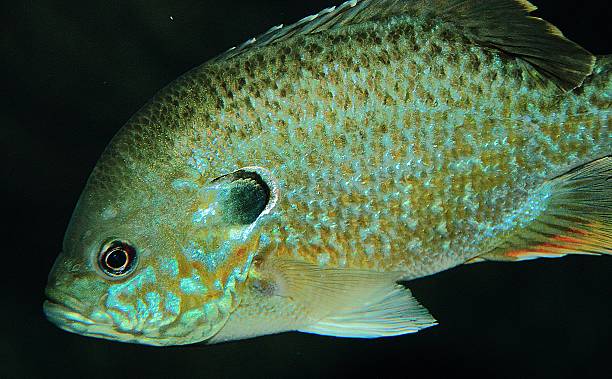
The Bluegill, Illinois’ state fish since 1986, is a favorite among anglers for its abundance and spirited fight. Found in lakes, ponds, and rivers, this small, colorful fish is easily recognized by its deep body, blue gill cover, and black ear flap. Bluegill is a gateway species for young anglers, fostering a lifelong appreciation for fishing. Their adaptability to various habitats highlights the importance of preserving Illinois’ freshwater ecosystems. The Bluegill symbolizes the state’s rich fishing traditions and natural beauty.
14. Indiana: Largemouth Bass

Indiana designated the Largemouth Bass as its state fish in 2012, highlighting its significance to the state’s fishing heritage. Known for its aggressive behavior and thrilling strikes, this species thrives in Indiana’s lakes, rivers, and reservoirs. Anglers value the Largemouth Bass for its strength and challenge, making it a cornerstone of recreational fishing. Its presence in healthy aquatic ecosystems reflects Indiana’s commitment to conservation and outdoor recreation. The Largemouth Bass embodies the state’s vibrant natural landscapes and love for fishing.
15. Iowa: Channel Catfish
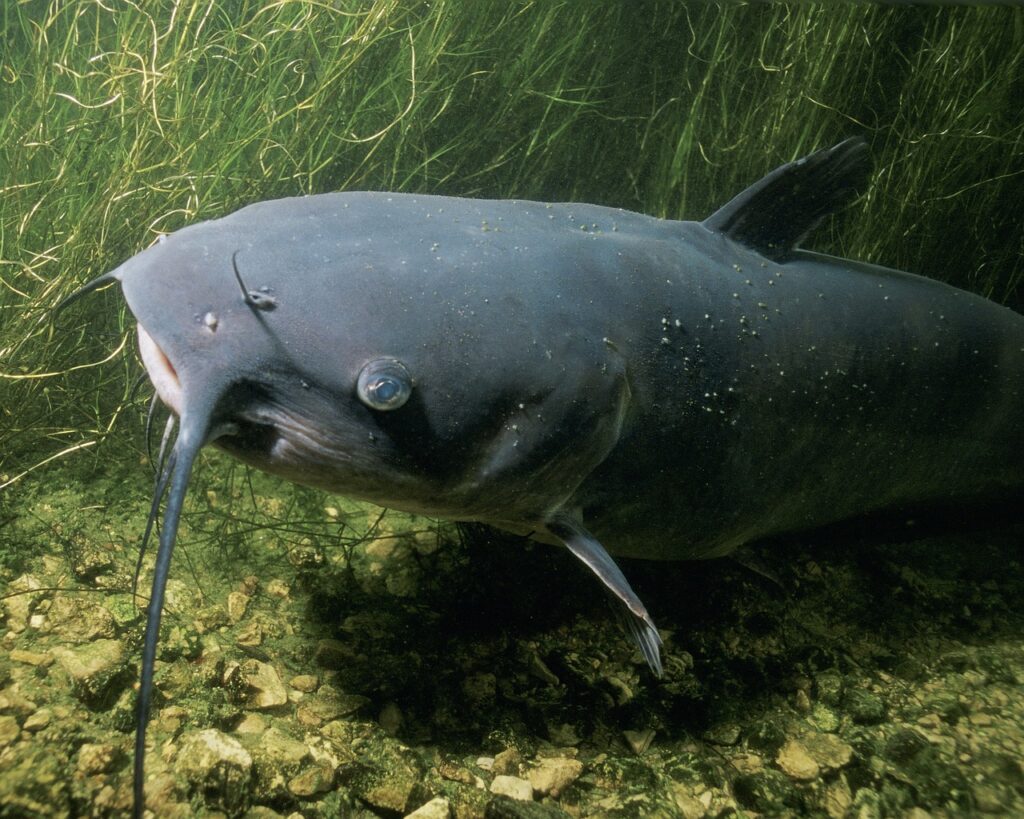
Pixabay
The Channel Catfish was named Iowa’s state fish in 2007, honoring its popularity among anglers. Found in rivers, streams, and lakes, this whiskered fish is known for its excellent flavor and resilience in various environments. Channel Catfish are nocturnal bottom feeders, using their sensitive barbels to locate food. They play a key role in maintaining balanced ecosystems. Revered for their hardiness and cultural significance, the Channel Catfish symbolizes Iowa’s rich fishing heritage and connection to its waterways.
16. Kansas: Channel Catfish
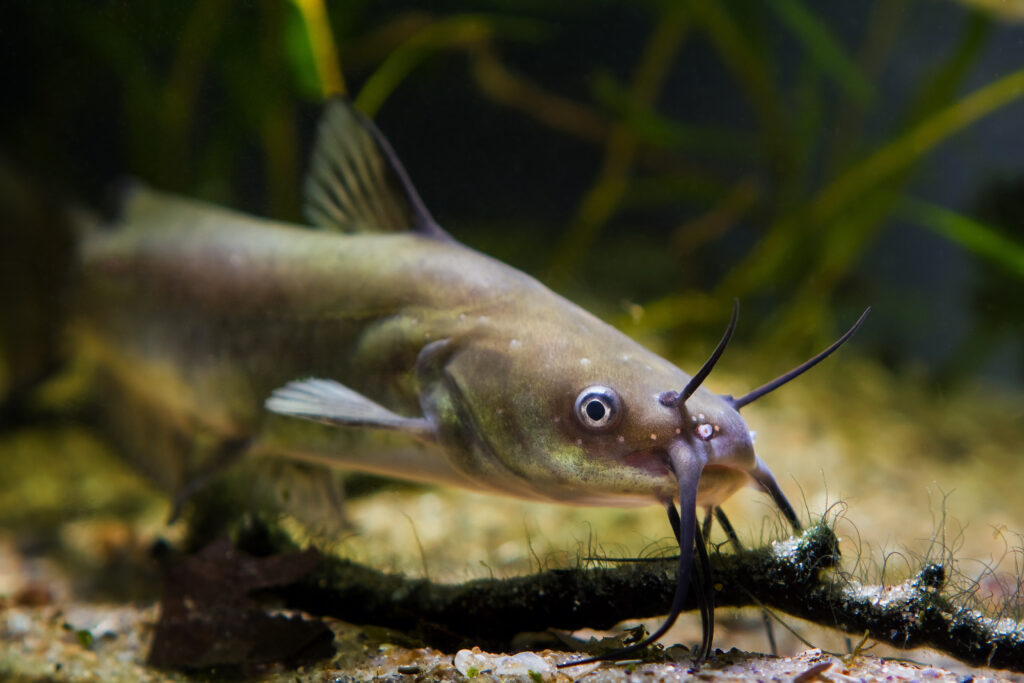
Shutterstock
Kansas also chose the Channel Catfish as its state fish in 2018. This adaptable species thrives in the state’s warm rivers, reservoirs, and farm ponds. Known for its streamlined body and whisker-like barbels, the Channel Catfish is a favorite among anglers for its size and taste. It plays an essential role in maintaining aquatic ecosystems by feeding on organic material. The Channel Catfish represents Kansas’ agricultural roots, recreational fishing culture, and dedication to preserving its freshwater habitats.
17. Kentucky: Spotted Bass
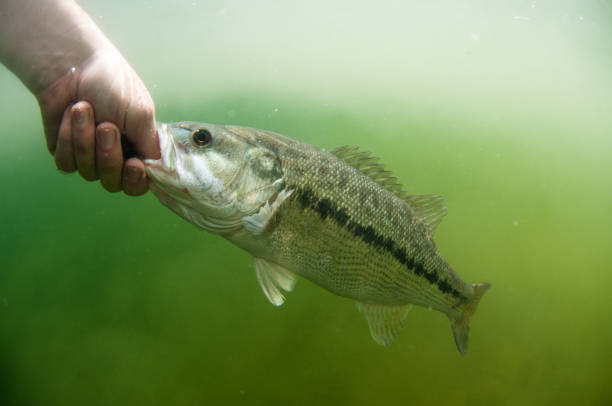
The Kentucky Spotted Bass, also known as the “Kentucky Bass,” was designated the state fish in 1956. Smaller than the Largemouth Bass, this species is known for its aggressive strikes and scrappy fight. Found in streams and reservoirs, the Kentucky Spotted Bass thrives in clear, fast-flowing waters. Its adaptability and spirited nature make it a favorite among local anglers. The Kentucky Spotted Bass represents the state’s love for fishing and its commitment to protecting freshwater ecosystems.
18. Louisiana: White Perch
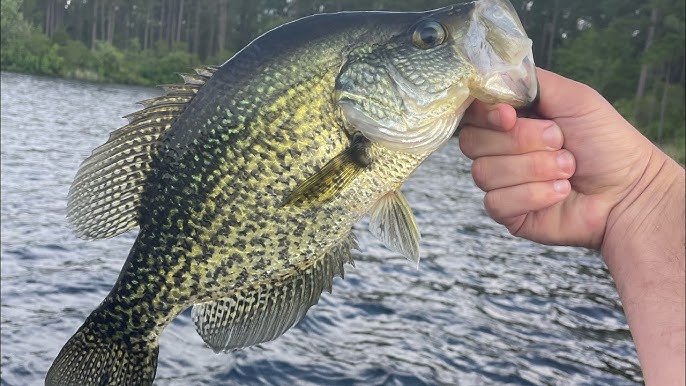
YouTube
The White Perch, locally known as Sac-a-Lait, was named Louisiana’s state freshwater fish in 1993. Known for its flaky, mild-tasting meat, this fish is a favorite in Cajun cuisine. White Perch thrive in Louisiana’s slow-moving rivers, lakes, and bayous, often congregating around submerged structures. They are popular among recreational anglers for their abundance and delicious flavor. The White Perch embodies Louisiana’s rich fishing culture, culinary traditions, and vibrant aquatic ecosystems.
19. Maine: Landlocked Salmon
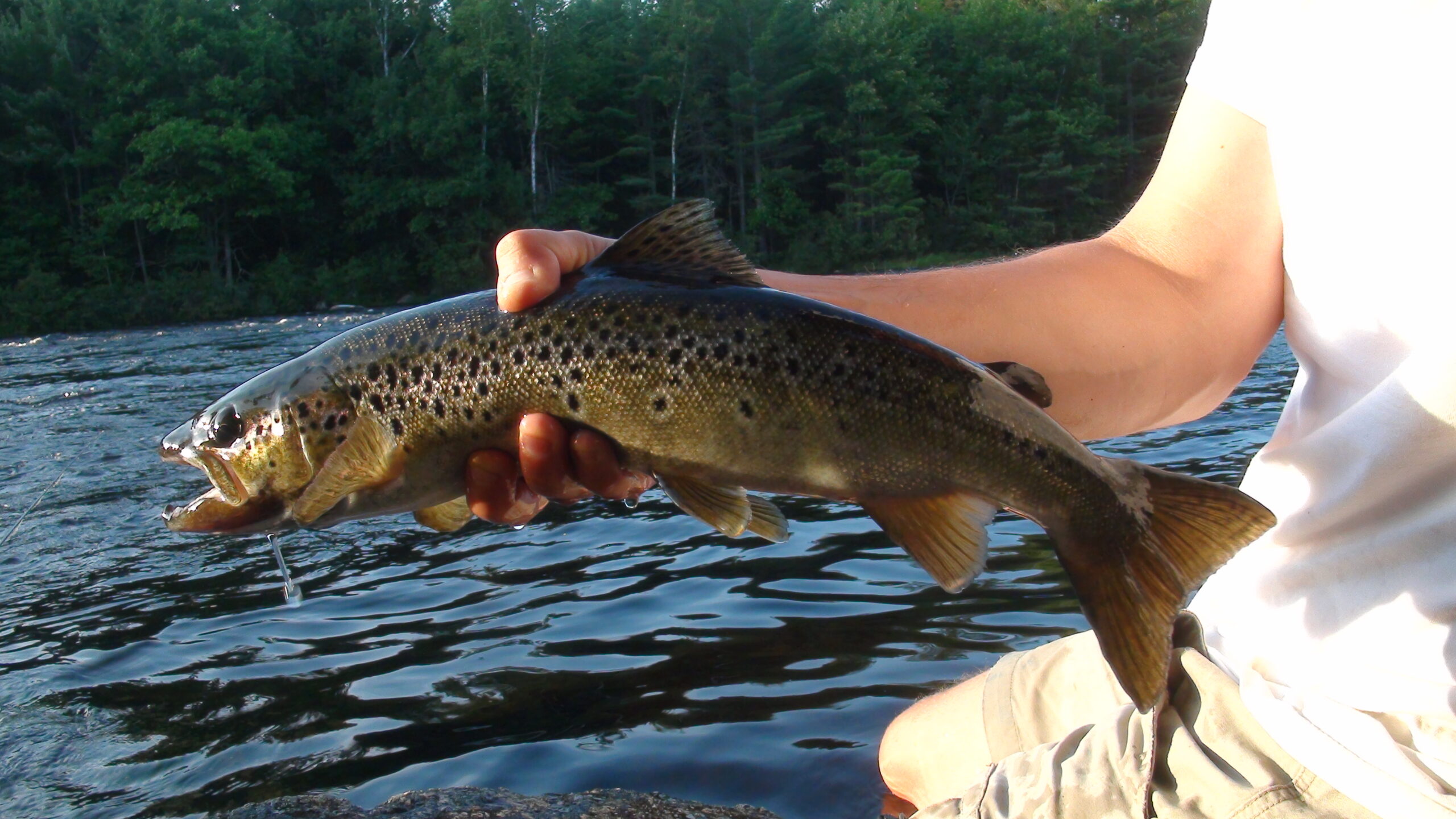
The Landlocked Salmon became Maine’s state fish in 1969. Native to the state’s cold freshwater lakes, this species is a non-migratory variant of the Atlantic Salmon. Known for its sleek silver body and acrobatic leaps, the Landlocked Salmon is a favorite among anglers. Its populations have been carefully managed to maintain Maine’s pristine fishing waters. The Landlocked Salmon symbolizes the state’s unspoiled wilderness and its deep connection to freshwater ecosystems.
20. Maryland: Rockfish (Striped Bass)
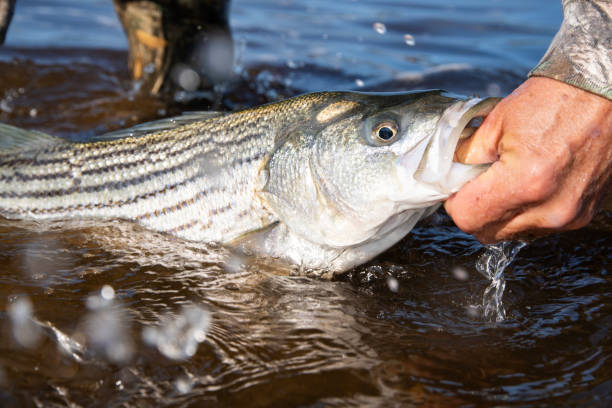
Maryland designated the Rockfish, also known as the Striped Bass, as its state fish in 1965. This iconic species is integral to the Chesapeake Bay ecosystem and the state’s fishing heritage. Known for its sleek, silvery body and bold stripes, the Rockfish is a favorite among anglers for its size and fight. It migrates between freshwater rivers and the open ocean, reflecting its adaptability. The Rockfish embodies Maryland’s commitment to conserving its waterways and preserving the bay’s natural resources.
21. Massachusetts: Cod
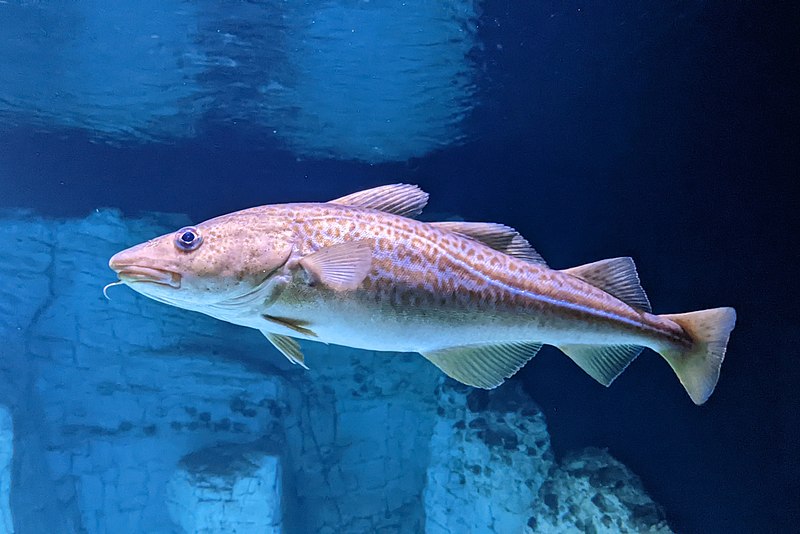
Wikipedia
The Atlantic Cod became Massachusetts’ state fish in 1974, reflecting its historical and economic significance. Known as the “Sacred Cod,” this species was essential to the early fishing industry, shaping the state’s maritime heritage. Cod thrive in cold Atlantic waters and are celebrated for their mild, flaky meat. Overfishing led to population declines, but conservation efforts aim to restore this vital species. The Atlantic Cod symbolizes Massachusetts’ deep connection to the sea and its commitment to sustainable fisheries.
22. Michigan: Brook Trout
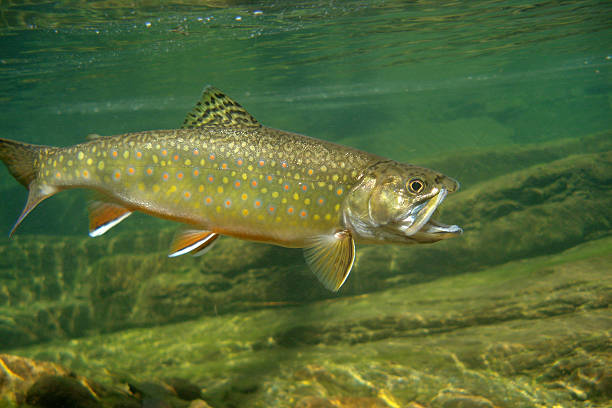
Michigan selected the Brook Trout as its state fish in 1988. Native to the state’s cold, clear streams and rivers, this colorful species is easily recognized by its speckled body and orange belly. Brook Trout are highly sensitive to water quality, making them an indicator of healthy ecosystems. Anglers prize this species for its beauty and challenging catch. The Brook Trout embodies Michigan’s dedication to conserving its pristine waterways and fostering a deep connection to outdoor recreation.
23. Minnesota: Walleye
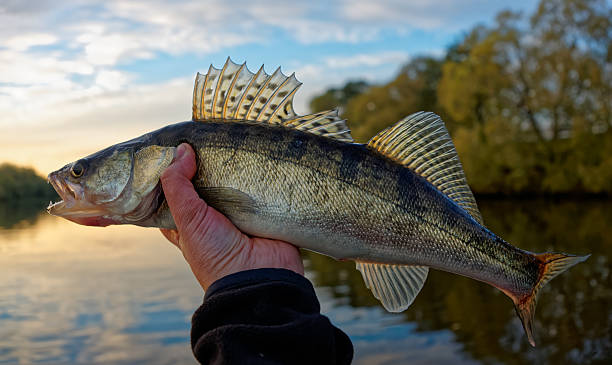
The Walleye became Minnesota’s state fish in 1965, reflecting its status as a favorite among anglers. Known for its golden hue and sharp teeth, the Walleye thrives in the state’s many lakes and rivers. Its excellent flavor and nocturnal feeding habits make it a prized catch. Walleye fishing is a cornerstone of Minnesota’s outdoor culture, celebrated in festivals and tournaments. The species symbolizes the Land of 10,000 Lakes and its dedication to preserving aquatic ecosystems.
24. Mississippi: Largemouth Bass
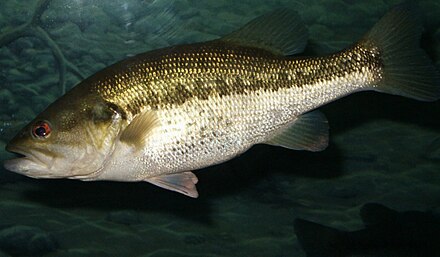
Mississippi designated the Largemouth Bass as its state fish in 1974, celebrating its importance to recreational fishing. Found in the state’s rivers, lakes, and reservoirs, this species is known for its aggressive strikes and powerful fight. Largemouth Bass are a favorite among anglers and play a crucial role in maintaining healthy aquatic ecosystems. Their popularity has made Mississippi a top destination for bass fishing tournaments. The Largemouth Bass embodies the state’s love for the outdoors and its vibrant fishing traditions.
25. Missouri: Channel Catfish
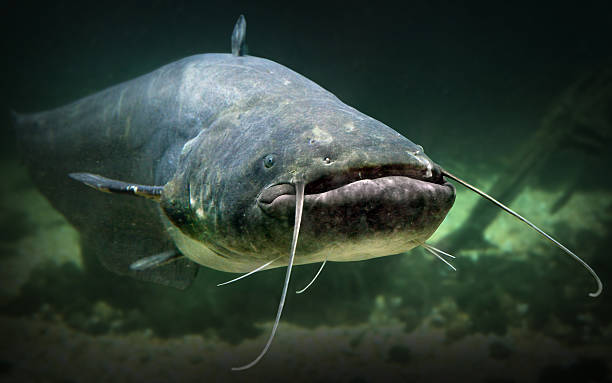
The Channel Catfish was named Missouri’s state fish in 1997, reflecting its abundance in the state’s rivers and lakes. Known for its whisker-like barbels and streamlined body, this bottom-dwelling fish is a favorite among anglers for its size and flavor. Channel Catfish play a vital role in maintaining aquatic ecosystems by consuming organic material. They are a staple in local cuisine and fishing culture, making them a fitting symbol of Missouri’s natural heritage and outdoor recreation.
26. Montana: Westslope Cutthroat Trout
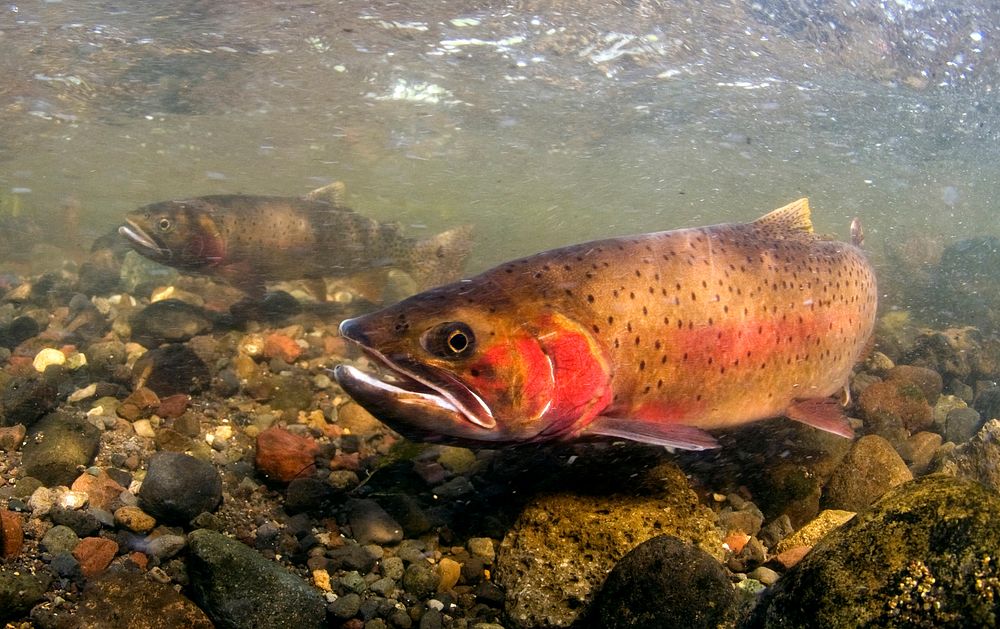
The Westslope Cutthroat Trout, designated as Montana’s state fish in 1977, is a native species thriving in the state’s cold, clear streams. Recognized by its golden hue and the red slashes beneath its jaw, this trout is prized by anglers for its beauty and challenge. Once threatened by habitat loss and hybridization, conservation efforts have restored its populations. The Westslope Cutthroat Trout symbolizes Montana’s wild landscapes and the importance of protecting native species and ecosystems.
27. Nebraska: Channel Catfish
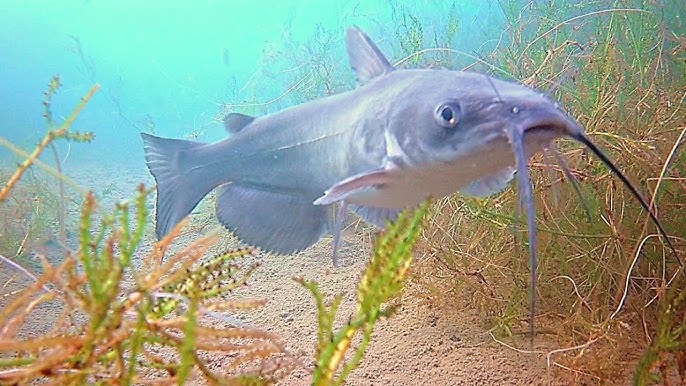
YouTube
Nebraska designated the Channel Catfish as its state fish in 1997, celebrating its role in the state’s fishing heritage. This adaptable species thrives in Nebraska’s rivers, reservoirs, and farm ponds. Known for its whiskers and nocturnal habits, the Channel Catfish is a favorite among anglers for its size and flavor. It plays a critical role in aquatic ecosystems by feeding on organic material. The Channel Catfish represents Nebraska’s commitment to preserving its freshwater habitats and fostering outdoor traditions.
28. Nevada: Lahontan Cutthroat Trout
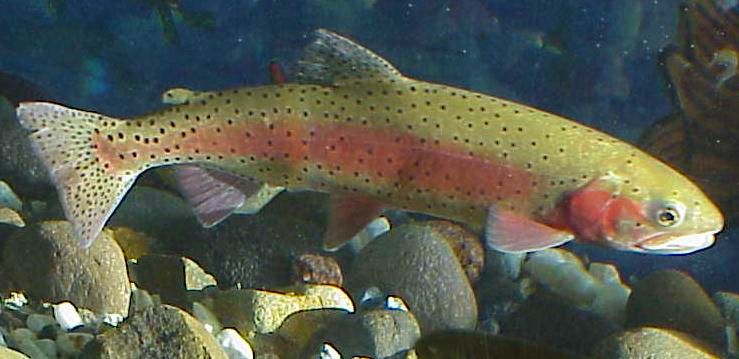
Wikipedia
The Lahontan Cutthroat Trout became Nevada’s state fish in 1981. Native to the state’s rivers and lakes, this trout is known for its large size and adaptability to alkaline waters. Once nearly extinct due to habitat loss and overfishing, conservation efforts have revived its populations. Lahontan Cutthroat Trout are highly prized by anglers for their size and beauty. This species represents Nevada’s diverse aquatic ecosystems and the state’s dedication to protecting native fish.
29. New Hampshire: Brook Trout
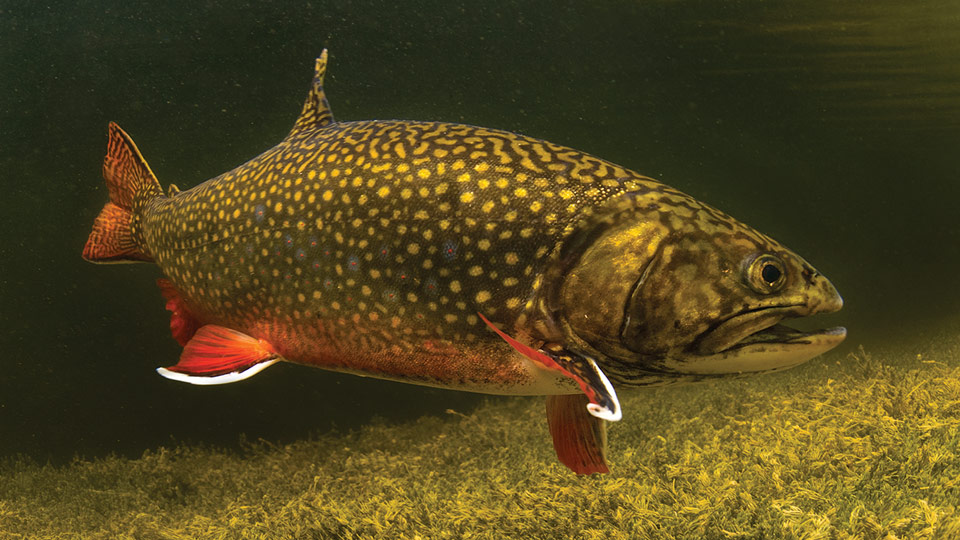
Wikipedia
New Hampshire named the Brook Trout its state fish in 1994, celebrating its role in the state’s pristine waterways. Known for its speckled body and bright colors, this trout thrives in New Hampshire’s cold, clear streams and ponds. Brook Trout are sensitive to water quality, making them indicators of healthy ecosystems. Anglers prize this species for its beauty and spirited fight. The Brook Trout embodies New Hampshire’s commitment to conserving its natural resources and fostering a love of outdoor recreation.
30. New York: Brook Trout

Wikimedia Commons
The Brook Trout was designated as New York’s state fish in 1975, reflecting its historical significance and beauty. Native to the state’s cold streams and lakes, this trout is admired for its vibrant speckled pattern and orange belly. Brook Trout is sensitive to environmental changes, highlighting the need for clean water and conservation. Anglers cherish this species for its challenging catch and connection to wild, scenic habitats. The Brook Trout symbolizes New York’s commitment to preserving its aquatic ecosystems.
31. North Carolina: Channel Bass
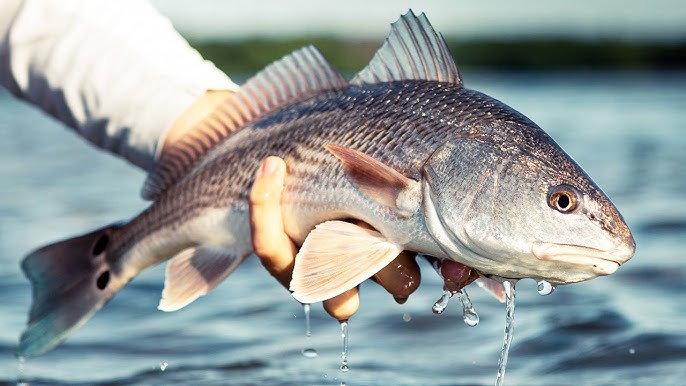
YouTube
The Channel Bass, also known as the Red Drum, was designated North Carolina’s state saltwater fish in 1971. Known for its reddish-bronze body and distinctive black tail spot, the Channel Bass thrives in the state’s coastal waters and estuaries. Anglers prize this species for its powerful fight and excellent flavor. Red Drum is vital to North Carolina’s fishing industry and conservation efforts. Their resilience and beauty symbolize the state’s rich coastal heritage and dedication to preserving marine ecosystems.
32. North Dakota: Northern Pike
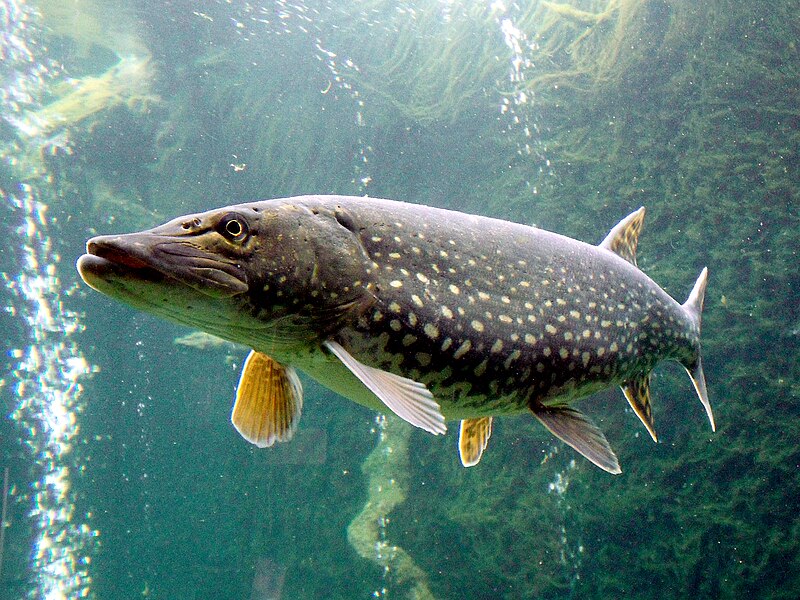
The Northern Pike became North Dakota’s state fish in 1969, representing the state’s vibrant fishing culture. Known for its torpedo-shaped body and sharp teeth, this predator thrives in the state’s lakes and rivers. Northern Pike are highly valued by anglers for their aggressive strikes and challenging catches. This species plays a key role in maintaining balanced aquatic ecosystems. The Northern Pike symbolizes North Dakota’s pristine waterways and the thrill of fishing in the state’s vast, open landscapes.
33. Ohio: Walleye

YouTube
Ohio selected the Walleye as its state fish in 1982, reflecting its popularity among anglers. Known for its golden scales and sharp teeth, this species thrives in Lake Erie and other Ohio waterways. Walleyes are prized for their excellent flavor and challenging catch, particularly during night fishing. Their presence supports Ohio’s fishing economy and outdoor culture. The Walleye embodies the state’s dedication to conserving its freshwater habitats and fostering a strong connection to outdoor recreation.
34. Oklahoma: White Bass

Simple Wikipedia
The White Bass became Oklahoma’s state fish in 1974. Known for its sleek silver body and black horizontal stripes, this species thrives in the state’s lakes and reservoirs. White Bass are highly migratory, often moving upstream in large schools during spawning season. Their spirited fight makes them a favorite among anglers. This species represents Oklahoma’s rich fishing traditions and the importance of preserving its freshwater ecosystems for future generations.
35. Oregon: Chinook Salmon
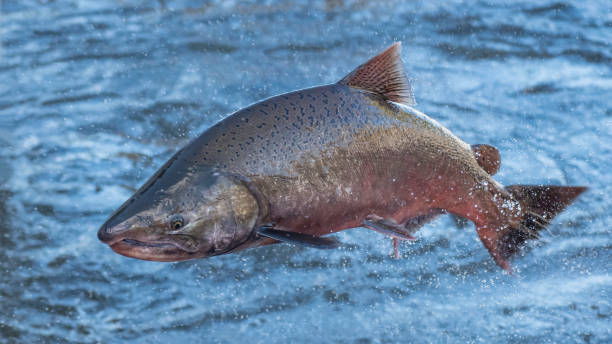
The Chinook Salmon, also called King Salmon, was named Oregon’s state fish in 1961. Celebrated for its size and strength, this migratory species is integral to the state’s fishing industry and Indigenous cultures. Chinook Salmon return from the Pacific Ocean to Oregon’s rivers to spawn, a journey marked by resilience and determination. These fish are a cornerstone of Oregon’s ecosystem, supporting wildlife and communities. The Chinook Salmon symbolizes Oregon’s wild spirit and its commitment to sustainable fisheries.
36. Pennsylvania: Brook Trout

Pennsylvania designated the Brook Trout as its state fish in 1970, celebrating its beauty and importance to freshwater ecosystems. Native to the state’s cold streams and rivers, this species is recognized by its speckled pattern and orange belly. Brook Trout are sensitive to water quality, making them indicators of healthy habitats. Anglers prize this species for its challenging catch and aesthetic appeal. The Brook Trout represents Pennsylvania’s dedication to conserving its aquatic resources and fostering outdoor traditions.
37. Rhode Island: Striped Bass
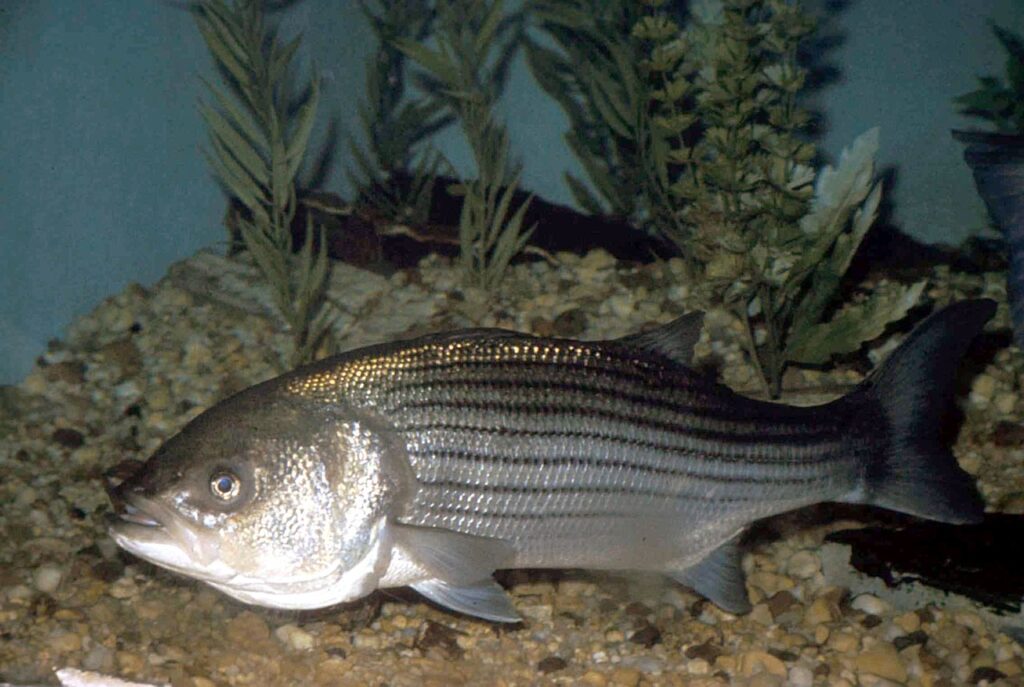
Wikimedia Commons
Rhode Island named the Striped Bass as its state fish in 2000, celebrating its role in the state’s fishing heritage. Known for its sleek body and bold black stripes, this migratory species is a favorite among anglers for its size and strength. Striped Bass thrive in Rhode Island’s coastal waters and estuaries, where they support both recreational and commercial fishing. This species symbolizes the state’s connection to the sea and its commitment to sustainable marine conservation.
38. South Carolina: Striped Bass
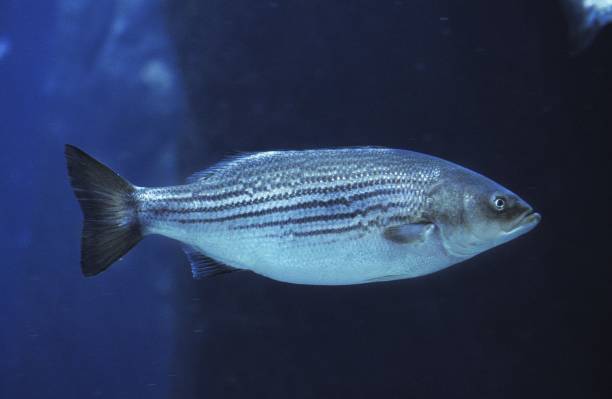
The Striped Bass, also called Rockfish, became South Carolina’s state fish in 1972. Found in rivers, lakes, and coastal waters, this species is highly valued by anglers for its powerful fight. Striped Bass plays a crucial role in maintaining balanced ecosystems and supporting local fisheries. Their migratory behavior connects freshwater and marine habitats, reflecting the diversity of South Carolina’s aquatic environments. The Striped Bass symbolizes the state’s rich fishing traditions and dedication to conserving its waterways.
39. South Dakota: Walleye

Wikipedia
The Walleye was named South Dakota’s state fish in 1982, highlighting its importance to the state’s fishing culture. Known for its golden scales and sharp teeth, this species thrives in the state’s lakes and reservoirs. Walleyes are a favorite among anglers for their excellent flavor and spirited fight. Their presence supports local fishing economies and outdoor traditions. The Walleye embodies South Dakota’s dedication to preserving its freshwater habitats and fostering a strong connection to its natural landscapes.
40. Tennessee: Smallmouth Bass

The Smallmouth Bass was designated Tennessee’s state fish in 2005. Known for its bronze coloring and acrobatic fight, this species thrives in the state’s cool, clear rivers and reservoirs. Anglers prize Smallmouth Bass for their strength and challenge, making them a cornerstone of Tennessee’s fishing culture. This species is an indicator of healthy aquatic ecosystems, reflecting the state’s commitment to conservation. The Smallmouth Bass symbolizes Tennessee’s love for fishing and its vibrant natural landscapes.
41. Texas: Guadalupe Bass

Wikipedia
The Guadalupe Bass, Texas’ state fish since 1989, is an endemic species found only in the state’s clear, spring-fed rivers. Known for its olive-green body and tenacious fight, the Guadalupe Bass is a favorite among anglers. Efforts to restore its populations have been successful, showcasing Texas’ dedication to conservation. The Guadalupe Bass embodies the Lone Star State’s unique ecosystems and its strong outdoor traditions.
42. Utah: Bonneville Cutthroat Trout

YouTube
The Bonneville Cutthroat Trout, Utah’s state fish since 1997, is a native species that thrives in the state’s cold rivers and streams. Recognized by its olive body and red slash under the jaw, this trout is a favorite among anglers. Once threatened by habitat loss, conservation efforts have restored its populations. The Bonneville Cutthroat Trout symbolizes Utah’s natural beauty and commitment to preserving native species.
43. Vermont: Brook Trout
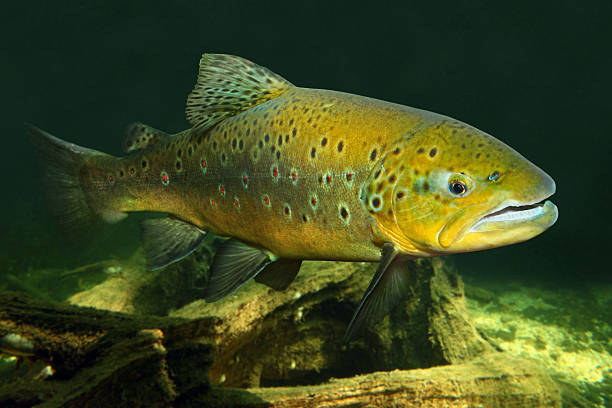
The Brook Trout (Salvelinus fontinalis) became Vermont’s state fish in 1978. Native to the state’s cold, clear streams and rivers, this species is recognized by its speckled body and vibrant colors. Brook Trout are sensitive to environmental changes, making them indicators of healthy ecosystems. Anglers prize this species for its challenging catch and aesthetic appeal. The Brook Trout represents Vermont’s pristine wilderness and its dedication to conserving natural resources.
44. Virginia: Brook Trout

A-Z Animals
Virginia designated the Brook Trout (Salvelinus fontinalis) as its state fish in 1993. This native species thrives in the state’s cool mountain streams, where its speckled body and orange belly captivate anglers. Known for their sensitivity to water quality, Brook Trout is a testament to Virginia’s commitment to preserving aquatic habitats. Anglers cherish this fish for its beauty and the challenge it presents. The Brook Trout symbolizes the state’s dedication to outdoor recreation and environmental stewardship.
45. Washington: Steelhead Trout
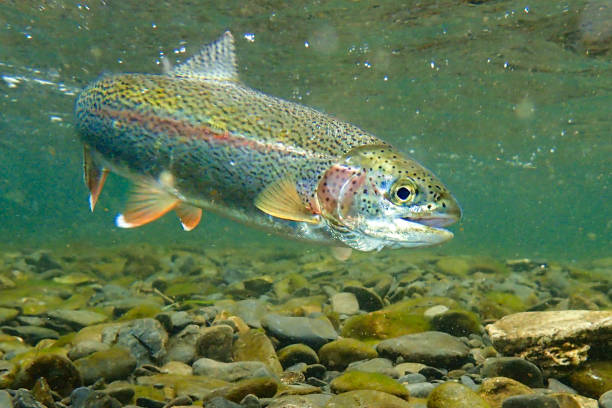
The Steelhead Trout was named Washington’s state fish in 1969. Known for its silvery body and ability to transition between freshwater and saltwater, this migratory species is a prized catch. Steelheads are celebrated for their strength and acrobatic leaps, making them a favorite among anglers. Their presence supports local fisheries and reflects the state’s commitment to preserving aquatic ecosystems. The Steelhead Trout embodies Washington’s wild spirit and its dedication to sustainable fishing practices.
46. West Virginia: Brook Trout

YouTube
The Brook Trout became West Virginia’s state fish in 1973. Thriving in the state’s cold, clear mountain streams, this species is prized for its speckled beauty and vibrant colors. Known as an indicator of clean water, Brook Trout highlights the importance of preserving West Virginia’s pristine ecosystems. Anglers value this fish for its spirited fight and connection to wild, scenic habitats. The Brook Trout represents the state’s dedication to conservation and outdoor traditions.
47. Wisconsin: Muskellunge
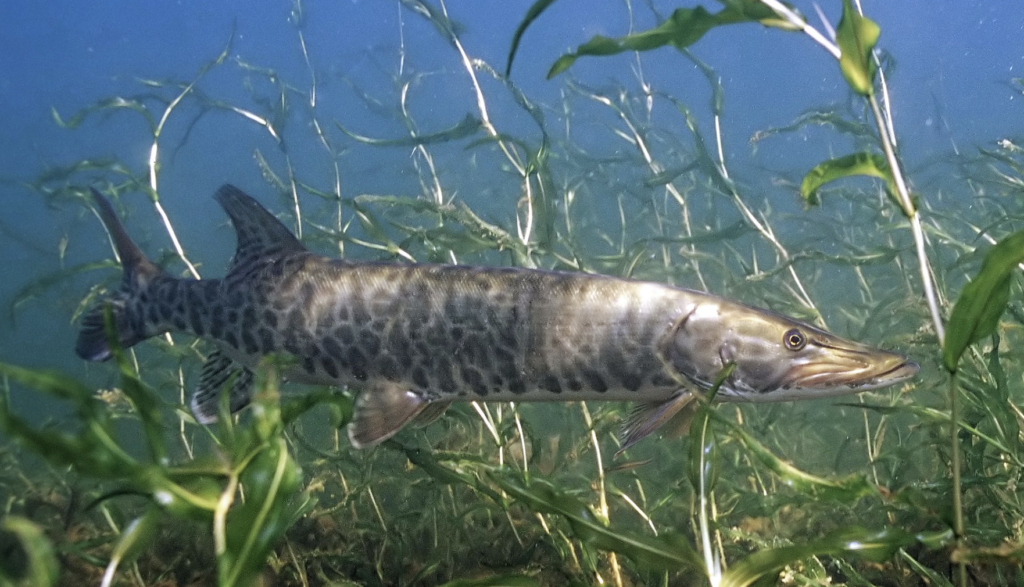
YouTube
The Muskellunge, known as the Muskie, was named Wisconsin’s state fish in 1955. Renowned for its size and elusive nature, this apex predator is a favorite among trophy anglers. Muskies thrive in the state’s northern lakes and rivers, playing a crucial role in maintaining balanced ecosystems. Their reputation as the “fish of 10,000 casts” adds to their mystique. The Muskie symbolizes Wisconsin’s rich fishing heritage and its dedication to preserving freshwater habitats.
48. Wyoming: Cutthroat Trout
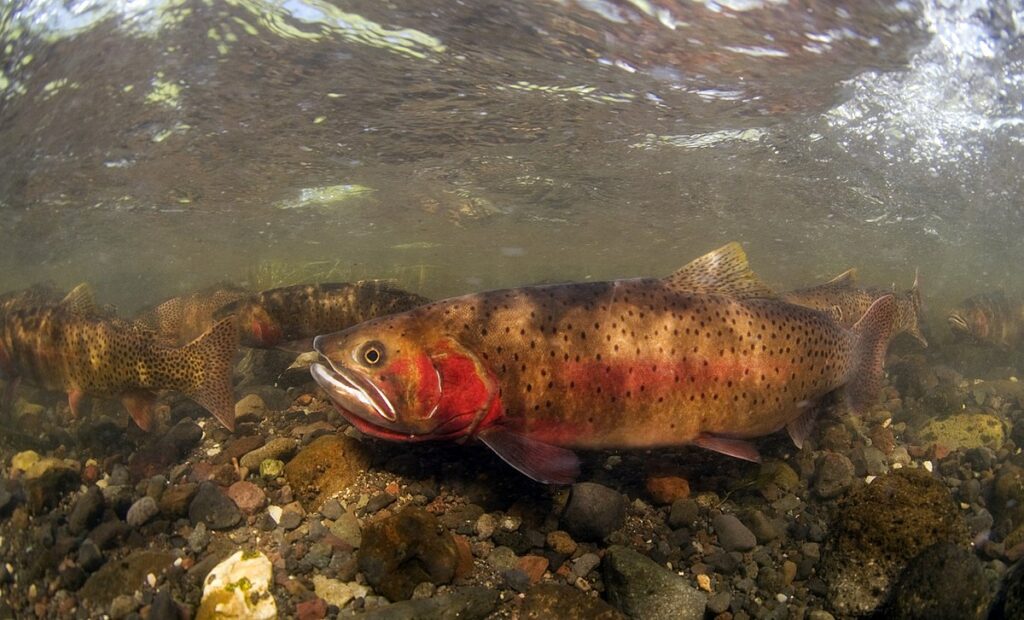
Wikipedia
The Cutthroat Trout, Wyoming’s state fish since 1987, is a native species thriving in the state’s cold rivers and mountain streams. Recognized by its red throat slashes, this trout is a favorite among anglers. Conservation efforts have focused on protecting its habitat and restoring populations. The Cutthroat Trout represents Wyoming’s wild beauty and its commitment to preserving native species for future generations.
49. Wisconsin: Muskellunge
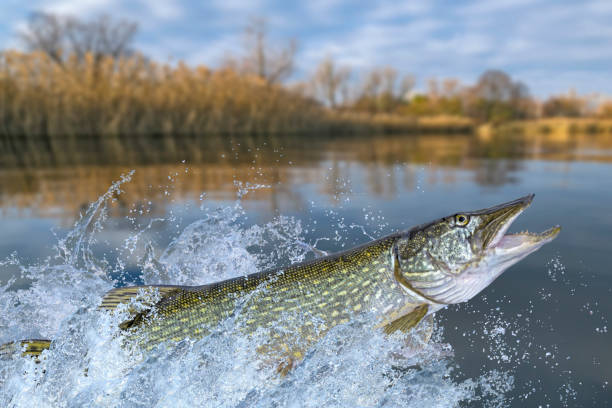
The Muskellunge, known as the Muskie, was named Wisconsin’s state fish in 1955. Renowned for its size and elusive nature, this apex predator is a favorite among trophy anglers. Muskies thrive in the state’s northern lakes and rivers, playing a crucial role in maintaining balanced ecosystems. Their reputation as the “fish of 10,000 casts” adds to their mystique. The Muskie symbolizes Wisconsin’s rich fishing heritage and its dedication to preserving freshwater habitats.
50. Wyoming: Cutthroat Trout

YouTube
The Cutthroat Trout, Wyoming’s state fish since 1987, is a native species thriving in the state’s cold rivers and mountain streams. Recognized by its red throat slashes, this trout is a favorite among anglers. Conservation efforts have focused on protecting its habitat and restoring populations. The Cutthroat Trout represents Wyoming’s wild beauty and its commitment to preserving native species for future generations.
From the Golden Trout of California to the Striped Bass of Rhode Island, these state fish reflect the diversity and beauty of America’s waterways. Each species tells a story of conservation, heritage, and the deep connection between people and their environment. Together, they showcase the incredible aquatic life that defines our nation.


